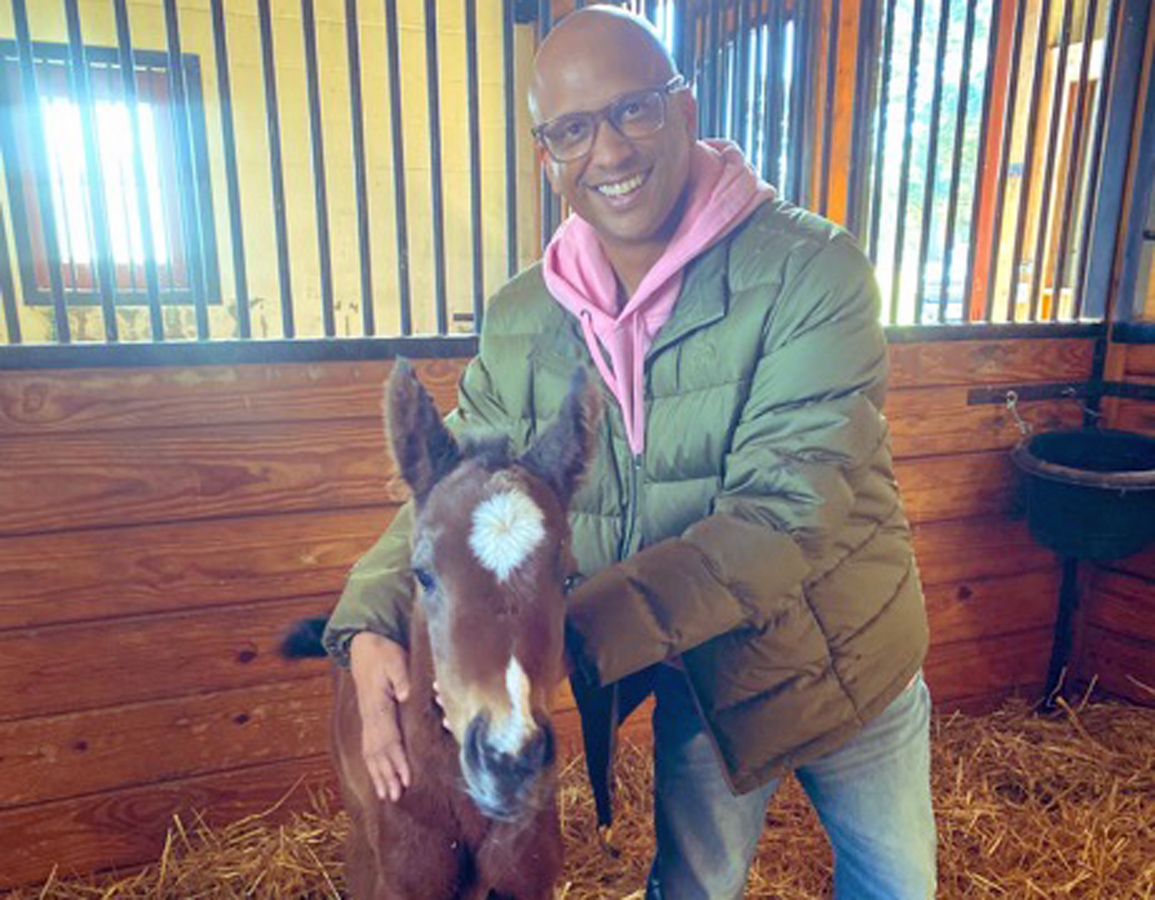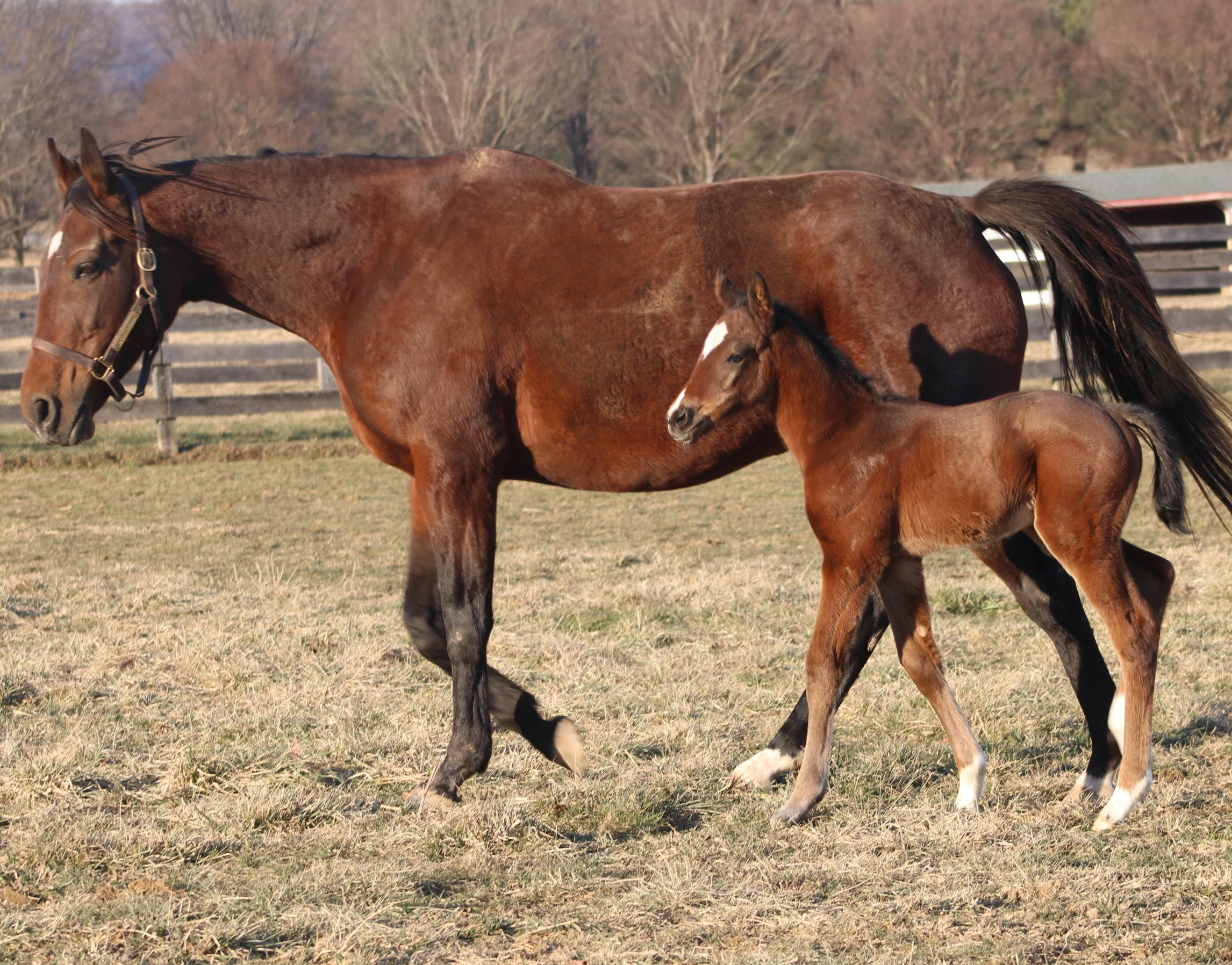Though the first three installments of this series have featured the stallions with most to prove, we know that they will collectively be dominating commercial traffic in the new covering season. But today we come to the group that has just completed that first, critical market cycle–and finally stands on the brink of testing their stock where it really counts.
Or should count, anyway. The sad reality is that they have already exhausted their usefulness to a lot of breeders, many of whom will meanwhile have ridden the carousel through two subsequent intakes of rookies and will now be sizing up a third.
Even the rest of us, as a result, face a challenge in seeking that delicate value equilibrium between market energy, which will keep that famous “pipeline” loaded, and keeping the faith with those we think will come good on the racetrack. The second part of the equation demands particular perseverance, of course, when it comes to those whose stock may require a second turn and maturity to approach their full potential. By the same token, as such types almost inevitably tend to lose numerical support, so they offer the potential of increased reward for those that do hang in there. By the time the yearlings conceived next spring come to market, this group will have sent a second sophomore crop into the fray. If those first couple of crops come good, then there's potential for demand greatly to exceed supply.
Needless to say, that's not a gamble too many commercial breeders are inclined to make, when it can be so much easier to make a fast buck from sires whose ability to recycle their excellence on the racetrack remains more or less completely unknown. It's not as though we ever learn as much as we might think from the market's reception of first weanlings and yearlings. In most years, averages tend to replicate pretty scrupulously the rankings implied by fees, with only marginal deviations indicating one or two whose stock has either disappointed or surpassed expectations.
This lot, however, have experienced a little more volatility. The averages achieved by first yearlings in 2021 disclose a couple of pretty blatant disasters, as well as a couple of equally conspicuous outliers in a positive direction–one of which duly retains a place on the value podium.
As with the previous intake, several of these were given fee cuts last year by farms making a really substantial gesture to breeders facing the uncertainties of the pandemic economy.
Given that these sires have meanwhile reached a notoriously vulnerable moment in their careers, some have been trimmed again; while others who have performed very well in the sales ring remain pegged at a rate that has come to seem pretty indulgent with the market having rallied so powerfully since. In other words, there should be plenty of value around.
One young stallion, admittedly, has proved such a smash at the sales that–most unusually, for one at this tricky crossroads–access will cost 50% more than last spring ahead of the launch of his first juveniles. City of Light, now up to $60,000, sold 67 of 75 for a spectacular average of $337,698. We'll have to see whether he can keep up that kind of momentum as these animals proceed to the track, not having been the most precocious himself, but he basically hasn't stopped glittering between his first career and the start of his second.
City of Light is a compliment to one of those farms that believes its clients' interests best served by restrained book sizes. In fairness, however, both Justify and Mendelssohn showed that the more industrial model can also function at ringside. It did feel almost shocking that both should have covered as many as 252 mares in their debut seasons, but each achieved the necessary dividends at the sales. Indeed, value being a relative concept, you could even make a case for Justify to be on the podium now that he has had consecutive cuts from $150,000 to $125,000 and now $100,000.
But those who can afford to operate at that kind of level can clearly make those judgements for themselves! So here, as subjectively as ever, are our suggestions for three more accessible steps of the pyramid. Once again, no apologies for fidelity to stallions we've liked all along. Though too much of this business operates as though their work is already done, they actually haven't even started yet–and they certainly haven't done anything to warrant desertion.
Bubbling under: For a stallion who has apparently been tough to handle at times, Bolt d'Oro is certainly getting with the program where it counts: he got the big numbers through that revolving door at Spendthrift, with 214 mares in his debut book at $25,000, and his $155,097 average edged out two $35,000 start-ups in Mendelssohn and Good Magic. Having participated in his farm's big gesture last year when slashed to $15,000, he is actually restored to $20,000 this time around–but is plainly entitled to make that fee work if he gets juveniles as accomplished as he was himself.
At the same farm, Cloud Computing processed his first crop at a brisk rate (53 sold of 60 at $45,783) and we've spoken previously in this series of trying to catch a rising tide with his sire Maclean's Music. A feasible roll of the dice at $5,000.
Bronze: ARMY MULE (Friesan Fire–Crafty Toast by Crafty Prospector)
$7,500 Hill 'n' Dale
Okay, so sire and damsire together hardly represent an obvious commercial formula, while his career was confined to four minutes. But there's no denying that this was a pretty wild talent. He won each of his three starts, by an aggregate 22 lengths, smashing the GI Carter H. on his stakes debut by half a dozen lengths in 1:20.94.
What would the market make of this meteor? Well, his opening book of 140 slumped to 47 next time round and he was trimmed from $10,000 to $7,500. Maybe those who responded, with 83 covers last spring, had noticed his weanlings had shown something of the physical majesty that underpinned his bullet time as a $825,000 F-T Midlantic sale-topping juvenile.
With that profile, he always seemed an obvious pinhooking medium and doubtless that helped to drive a stunning debut at the yearling sales. With a colt and filly both hitting $400,000, he shifted 63 of 76 at $91,809–nine times their conception fee!
One way or another, the genes were certainly functioning in this freak: remember that his sire has an aristocratic pedigree, while his first three dams respectively scored at stakes, Grade III and Grade II level. John Sikura is building something special on a far narrower foundation, in Maclean's Music, and I suspect that those who get aboard with Army Mule now will already find themselves ahead of the curve at the 2-year-old sales–never mind once the freshmen's championship begins to take shape.
Silver: MO TOWN (Uncle Mo–Grazie Mille by Bernardini)
$7,500 Ashford
Now here's a guy whose every trajectory is climbing sharply–with the solitary exception of his fee, which is 40% down on his opening $12,500. Time, in other words, for breeders to catch a rising tide.
Having stayed in training at four, only to disappear after a single start in the spring, he was rather a forgotten horse when assembling a debut book of 144. In 2020, down to $10,000, he received 108 partners. Last spring, however, came a transformation: encouraged by Uncle Mo's flying start as a sire of sires, no fewer than 204 mares profited from another reduction in his fee (partly, of course, a Covid concession). So whatever Mo Town can do with his first couple of crops, he is going to be far better placed than most to consolidate.
In the meantime, moreover, Mo Town has made a fine debut at the yearling sales, processing 70 of 78 at an average $60,250. And his stock is entitled to land running, Mo Town having won the GII Remsen S. at two. Though he had to regroup the following year, he eventually did so with a dashing turn of foot to land his Grade I on turf (his half-sister by War Front was runner-up in an Irish Classic).
And, actually, let's just forget Uncle Mo for a minute. For the bottom half of this horse's pedigree has been beautifully seeded, with his first five dams by Bernardini, Carson City, Danzig, Sir Ivor and Native Dancer, the fifth being a full sister to Raise A Native. (As such, the purchase of the Grade I-placed granddam as a bargain weanling showed a typically alert Gunther touch, her sire Carson City being a grandson of Raise A Native.)
But nobody, of course, is going to forget Uncle Mo for terribly long. His stratospheric pricing will surely direct the farm's less affluent clients towards an alternative so eligible to emulate those already making Uncle Mo well named as a young sire of sires. Momentum is exactly what Mo Town has now, at a stage in his career when most rivals are nervously treading water.
Gold: ACCELERATE (Lookin At Lucky–Issues by Awesome Again)
$15,000 Lane's End
A horse like this was never going to cause a commercial stampede. Even so, he was priced with nearly brutal realism, at just $20,000. That told us much that was wrong with our business, as this was a model racehorse whose soundness and attitude underpinned a $6.7 million career of inexorable improvement, crowned by what would have been a Horse of the Year campaign but for the claims of a historic Triple Crown winner (five Grade Is interrupted only by a neck defeat at nine furlongs by the dasher City Of Light). But the strategy paid off with an opening book of 167, really pushing the boundaries by the laudably conservative standards of this farm. He has been ticking over nicely enough over the two seasons since, too, with another 213 mares; and processed his first yearlings at a perfectly respectable rate, rehousing 70 of 88 at $72,831.
Even from such a terribly low base, Accelerate has been consecutively eased to $17,500 and now $15,000. He's an unbelievable amount of horse for that kind of money. We know that his own sire remains scandalously under-rated, but turn that round and ask yourself what kind of physique he must be recycling to raise $380,000 as a yearling from one of the best judges in the game.
That's all packaged with brothers placed at Grade I and Grade III level, their dam a stakes-placed half-sister to a Grade I winner; he's also inbred to Broodmare of the Year Smartaire. Not a chink in his armor, then, and you'll be sorry to have turned down this insulting fee when foals bred at much higher cost start being crushed by his stock.

The post Value Sires, Part IV: First Juveniles in ’22 appeared first on TDN | Thoroughbred Daily News | Horse Racing News, Results and Video | Thoroughbred Breeding and Auctions.
Source of original post


